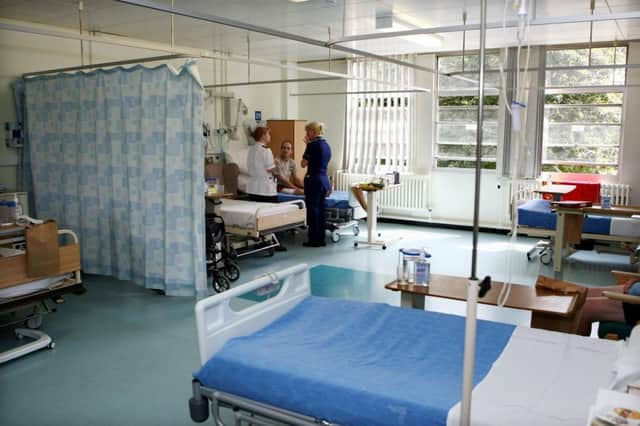Crowded rooms exceeded safe capacity at York Teaching Hospital NHS Foundation Trust


Doctors say this winter has put more strain than usual on the NHS, warning that high bed occupation rates could lead to operations being cancelled.
NHS England data shows that, on average, 914 out of 999 beds were occupied during the period. It is a rate of 91%, above the threshold of 85%, when patient safety is considered to be compromised.
Advertisement
Hide AdAdvertisement
Hide AdIt is higher than five years earlier, when bed occupancy reached 89%.
Health bodies said the overnight numbers may underestimate the reality, because the count is taken at midnight, not the busiest time in a hospital.
The data covers patients under the care of a consultant, but excludes critical care cases and those being attended by nurses.
Cots for babies are also excluded.
Most of the beds in the York Teaching Hospital NHS Foundation Trust, 949, were reserved for patients with general and acute illnesses, such us pneumonia or kidney stones.
The rate of occupancy for these beds was 93%.
Advertisement
Hide AdAdvertisement
Hide AdMiriam Deakin, director of policy and strategy at NHS Providers, which represents all trusts, said: “High levels of bed occupancy put pressure on staff.
“They stretch services, meaning some patients may wait longer for a bed, and impact hospitals’ ability to deal with unpredictable events or seasonal pressures.
Addressing the situation across England, she added: “This winter has seen very high demand for urgent and emergency care, with more patients arriving at hospital by ambulance, and a peak bed occupancy rate of 95.2%.
“However, high bed occupancy is now an all-year event rather than just confined to the winter months.”
Advertisement
Hide AdAdvertisement
Hide AdNationally, 88% of beds were occupied between October and December, compared with 86% five years earlier.
Dr Simon Walsh, the British Medical Association’s lead for emergency medicine, said: “When bed occupancy levels go beyond the recommended safety levels, patient care can be compromised as there is a greater risk of infection and hospitals are less able to cope with spikes in demand creating a backlog in the system.
“This can result in delays to patients receiving the care they need and, as we have seen repeatedly, the situation can very quickly escalate.”
Professor Neil Mortensen, vice president of the Royal College of Surgeons, said overcrowded hospitals can lead to last minute cancellations of operations.
He added: “High bed occupancy rates make it difficult to contain the flu and vomiting bugs that become more prevalent in the winter months.”